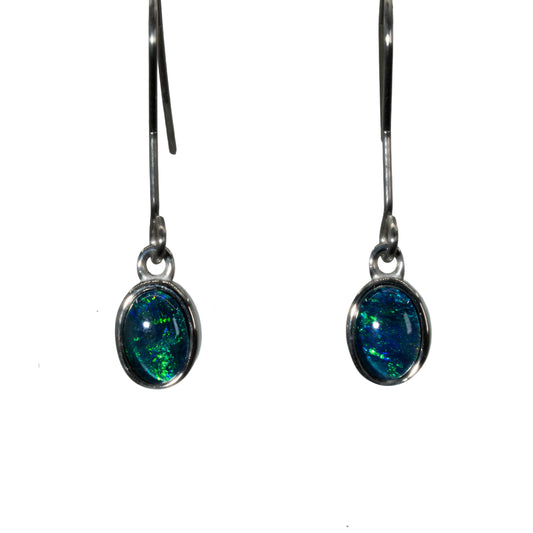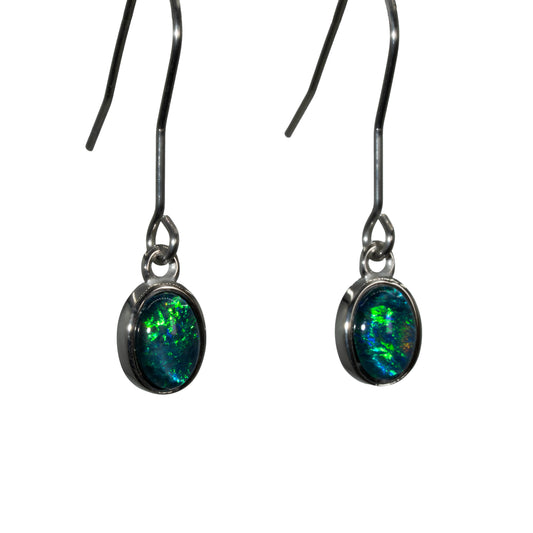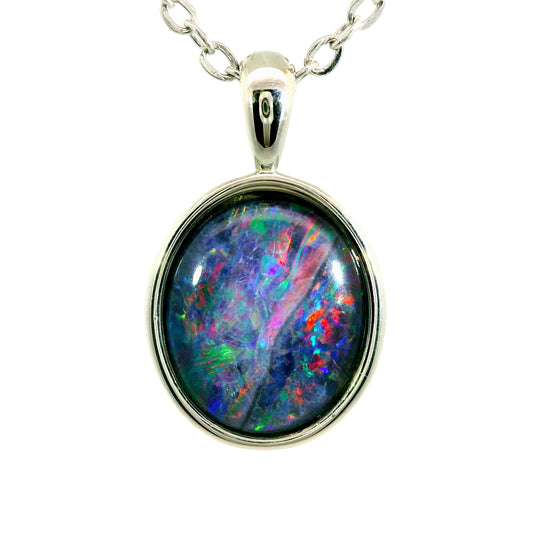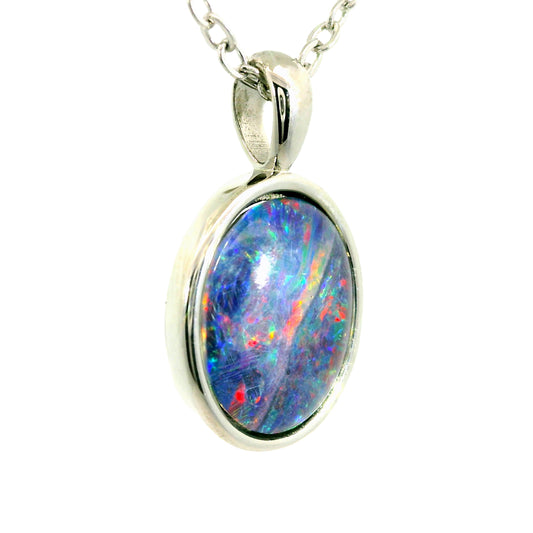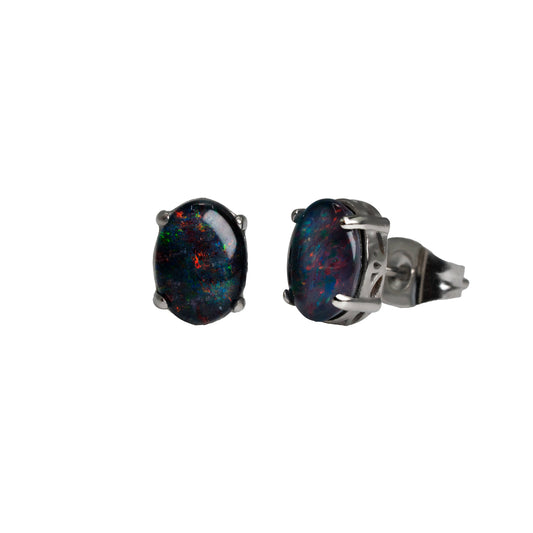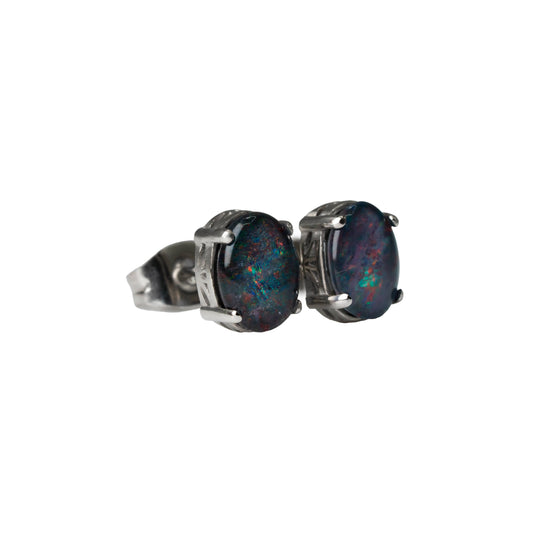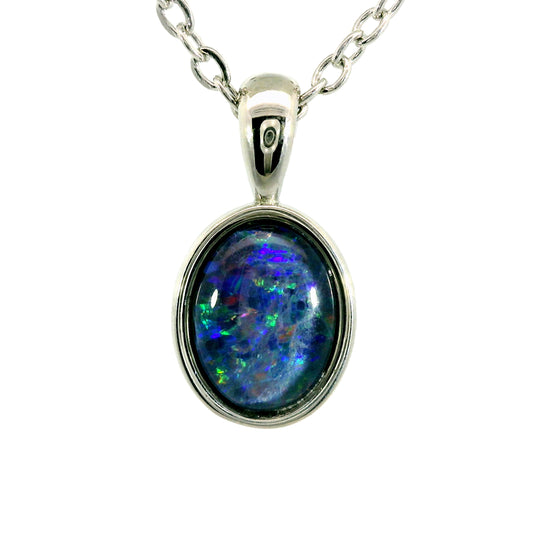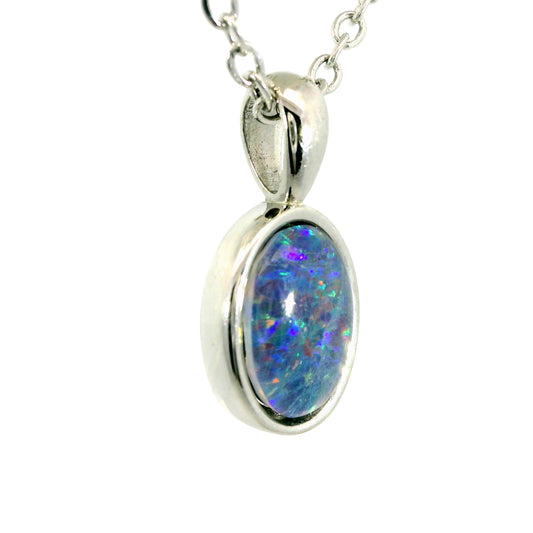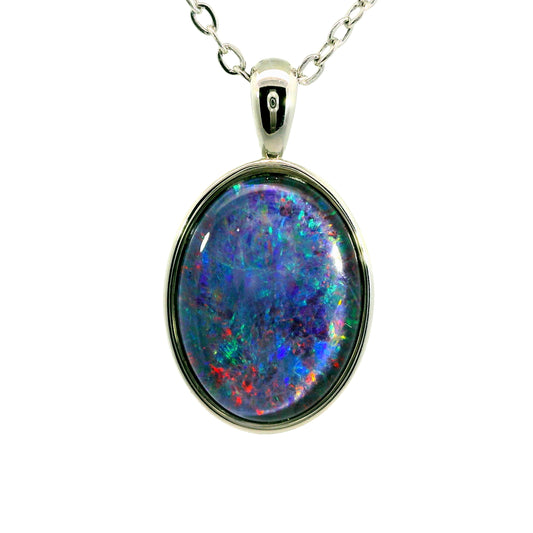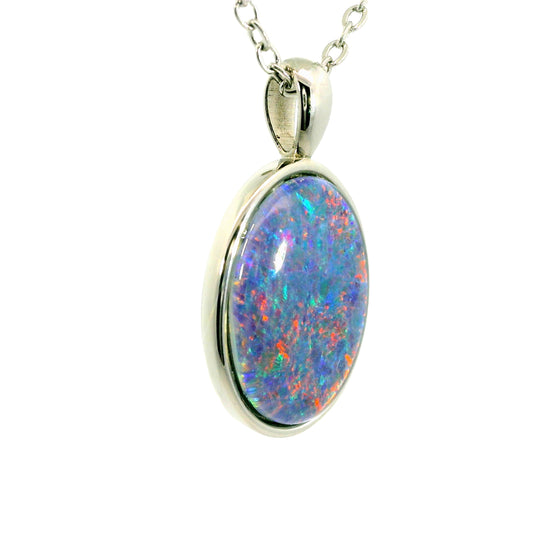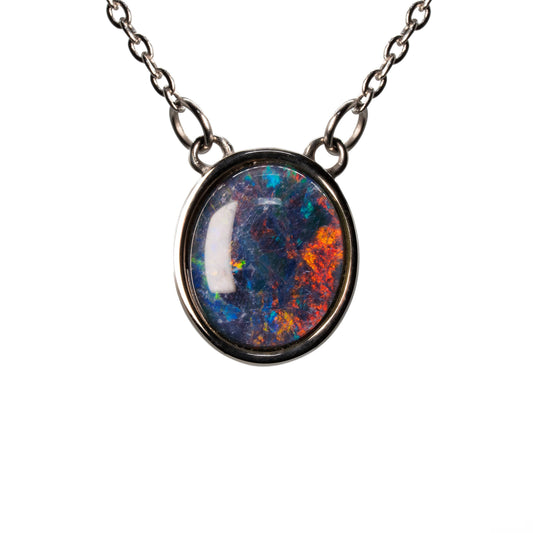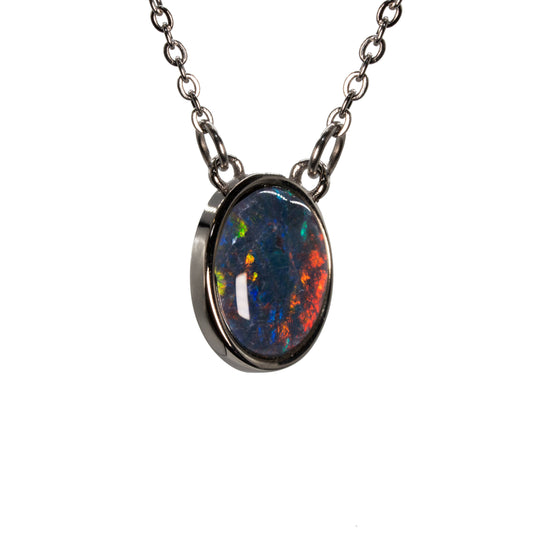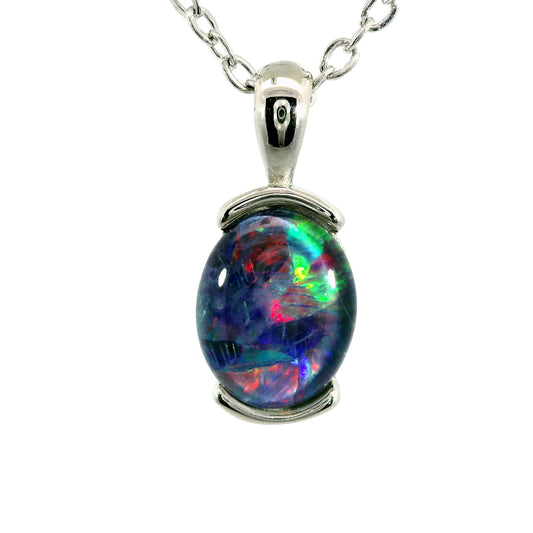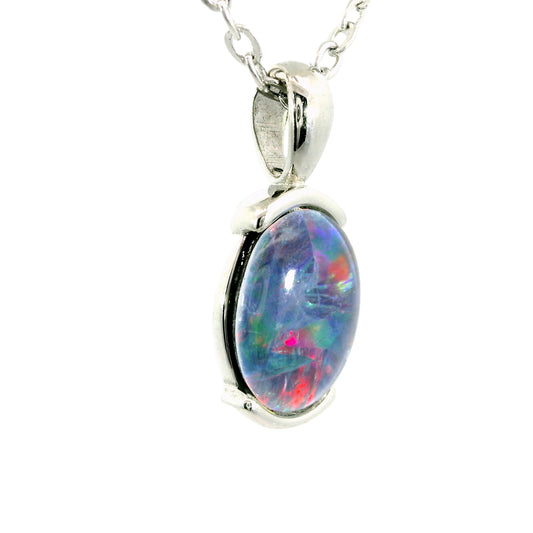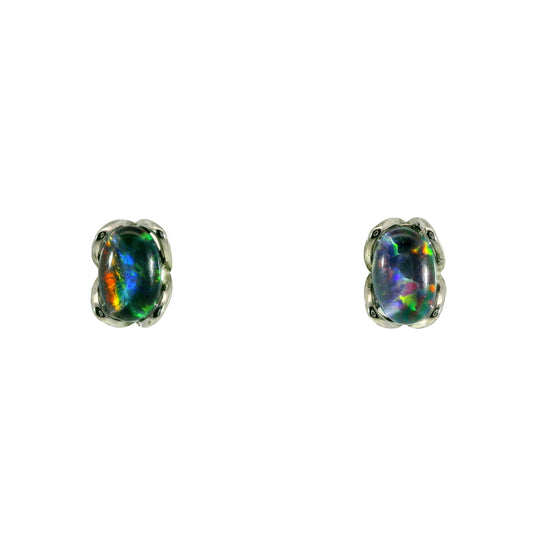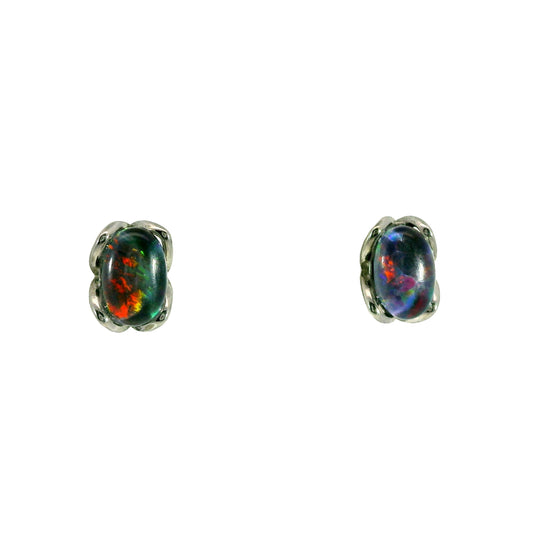Beliefs and Superstitions Surrounding The Opal Gemstone
Discover the captivating world of opal gemstones – nature's living kaleidoscope of colour and wonder. Over time, these mesmerising gems have inspired a range of different beliefs and superstitions, creating traditions that have made them more than just jewels. Whether in the hands of ancient civilisations or expert opal cutters in the modern world, opals have always held a mystical allure, symbolising hope, healing, and positive energy among a range of other feelings.
Australia’s rich opal heritage has brought about a variety of unique opal colours and patterns like the iconic black opal, with each inspiring different beliefs and superstitions. The team at Australian Opal Cutters are your guide to discovering the history, spirituality, and significance of opal jewellery. Join us as we journey through time and reveal why opals are now viewed to adorn not only the body but also the soul.
The History and Mystique of Opals
Across different civilizations and societies through history, opals have held great spiritual significance, with wearers and admirers believing tales of connection between the earthly and the divine were woven into these gems. In ancient Rome, opals were treasured not just for their exquisite play of colours, but also for their ability to ward off negativity. Ancient Greeks held similar ideals, believing opals gave their owners the gift of prophecy and shielded them from diseases. These radiant gems weren't just accessories; they were carriers of positive energy.

This perception of good health and medical use remained strong throughout the history of opals across several civilisations. In ancient Rome, these luminous stones were believed to hold remedies for ailments, particularly eye diseases. Their iridescence wasn't just a visual spectacle. Instead, they were thought to channel divine energies for wellness.
An important early description of opal is that of Caius Plinius Secundus, better known as Pliny the Elder, who lived in the first century A.D. Pliny wrote an extensive treatise entitled, “Natural History”. He describes opal as being:
"Made up of the glories of the most precious gems, to describe them is a matter of inexpressible difficulty. For there is amongst them the gentler fire of the ruby, there is the rich purple of the amethyst, there is the sea-green of the emerald, and all shining together in an indescribable union. Others, by an excessive heightening of their hues equal all the colours of the painter, others the flame of burning brimstone, or of a fire quickened by oil."
Opal was held in great value by the Romans, a fact which is reflected in the well-known story of the Roman senator Nonius. He is said to have possessed a very fine opal about the size of a hazel nut, and valued at 20,000 sesterces. The stone was so beautiful that the Roman emperor demanded that Nonius hand over the opal (whether by purchase or gift is not recorded). Nonius himself held the stone in such high regard that he departed from Rome with his gemstone, leaving his wife, family and property behind him.

The reverence of opals also extended to their spiritual home in Australia, because Indigenous Australians also believed opals to be sacred. Here, the black opal gemstone held particularly great cultural and spiritual significance. Indigenous Australians believed that these gems held greater purpose than decoration; they held spiritual significance. Used in ceremonies and rituals, Indigenous Australians believed opals symbolised a bridge between the earthly and the divine. In these traditions, the prized gemstones were viewed to embody the creator's vibrant imagination and served as gateways to ancestral realms.
Indigenous Aboriginal Elders from the Yolgnu tribes in Arnhemland say that when the earth was covered with water the great creator spirit “Garray” created the rainbow as a promise of His great love for balirrpalirr (the spirit of mankind). The mokuy (evil spirits) were jealous of this love and caused a terrible drought so that the rainbow would never be seen by the beloved balirrpalirr. Garray however placed the rainbow inside a stone and hid it in the ground, hididn the gift for future generations. The mokuy looked everywhere but could not find it. This is djari banda (Rainbow Stone) and is considered to be the Garray Gunda – The Creators Gemstone!
Across many ancient civilisations, opals were not simply regarded as beautiful stones; they embodied the stories and wisdom of their ancestors and shielded them from ill health, connecting them with loved ones and inspiring faith and religious belief.
The home of Black Opal, a rural town in north-western New South Wales, Australia known as “Lightning Ridge” is said to have originated when in the 1870s some passers by found the bodies of a farmer, his dog and 200 sheep which had been struck by Lightning. White settlers may have seen opal as early as the 1880s, mining didn’t begin until 1901 or 1902. The first opal rush occurred in 1905 on the long ridge near Wallangilla Tank. Lightning Ridge's future wouldn't be the same if it wasn't for a person called Charles Nettleton - who was a former gold miner travelling from the White Cliffs via Lightning Ridge in the year 1901.

He camped with the Ryan family who accidentally picked up and showed Charles some fiery black stones (later became well-known as ‘Black Opal’), which he had an idea that was an opal. He was “mesmirised” and had never has seen and incredible play of colour in any other gemstone.
Charles Nettleton started his first shaft in 1902 in 1903, moved across to a different area and found a large parcel of quality opals. Not knowing how they were worth, he showed the opal to a leading Sydney dealer but the darkness of the stone did not impress the dealer at all, he offered for only $1 for the lot.
Although his attempt did not succeed, Charles Nettleton never gave up and instead became more determined to keep the Opal fields alive. He continued searching for more opal and tried to sell what he had left. Charles Nettleton decided to walk to White Cliffs where opal miners and dealers first started gathering for daily deals. In 1903 he met an opal merchant who offered him $30 for his black opal parcel, a much better deal than what he'd got earlier and all his hard work had finally paid off !!
Opal Superstitions and the Diamond Industry
Fast-forward from ancient times to the 19th century, however, and opals found themselves entangled in a web of negative superstitions. The De Beers diamond company directly competed with the opal trade, and in an effort to boost their sales and reduce demand for opal jewellery, De Beers launched a successful marketing campaign that promoted diamonds and aimed to discredit opals. The De Beers company created the idea that diamonds were the ultimate symbol of love and commitment and that a diamond engagement ring was a must-have for any couple.
In the 1920s and 1930s, the opal was the engagement ring gemstone of choice, as it was exceptionally rare and stunningly beautiful. It is alleged that the Diamond cartel De beers, attempted to discredit opal by hiring a novelist named Sir Walter Scott to write a novel about the Queen of Spain who had a run of bad luck after being given an opal! The story turned out to be a bestseller.

De Beers then purchased highly productive opal mines in Hungary and shut them down claiming that the opal “had run out”. It is alleged that the De Beers consortium also started a rumour that the Australian Opal was “fake” because the colours were “too incredible to be real”. This unfounded fear spread like wildfire and saw many disregard the beauty of opals in fear of encountering bad luck, and as a result, their value plummeted for a time.
Queen Victoria however did a lot to reverse these false statements. She became a lover of opals and wore them throughout her reign. Her friends and her five daughters were presented with opals and because the royals were regarded as the model for fashion the opals once again became highly sought after. In the later years of her reign, various Australian opal fields were expanded and their treasures were shared with the royal family.
This calculated effort by De Beers has proven to be very effective over the last century, but today these myths have been dispelled. In recent times, movies such as “Blood Diamonds” have shown how Diamonds can be used to traffic slaves and people are becoming aware as to just how common Diamonds actually are. Alternately movies such as ‘Uncut Gems’ and ‘Outback Opal Hunters’ have helped Opals regain their rightful spotlight, and opal jewellery pieces have grown to become highly treasured for their beauty and mystic appeal once again.
Modern Views On Opal Jewellery
In the modern era, opal jewellery remains highly spiritual and treasured for more than its great visual appeal. These bespoke gemstones are viewed as vessels that symbolise cherished beliefs and offer a way for the wearer to embrace their own spirituality. Contemporary beliefs about opal jewellery tend to centre around the notion that each individual piece offers its own unique touch of enchantment and positive energy.
Opals are incredibly unique and the only gemstone on earth that actually captures and transforms a rainbow into a Gem. The scientific name for opal is SiO2•nH2O Which is simply “Sand+water”. It is a miraculous transformation of a water rainbow that forms underground into an actual gemstone that still baffles scientists today!

In selecting a piece of customised opal jewellery to purchase, the wearer’s decisions often extend beyond aesthetics, with many people considering whether they feel an emotional and spiritual bond with the individual piece. Each opal is viewed to hold its own unique story, and these pieces are no longer viewed simply as fashionable accessories; they’re seen as a symbol of The Creator's promise of love for mankind.
When it comes to choosing the perfect opal piece, the options are as diverse as the spiritual connections they foster. Opal pendant necklaces dangle close to the heart, serving as a constant reminder of positive energy and personal growth. Opal earrings frame the face with a radiant aura, enhancing the wearer's own inner light. Opal bracelets encircle the wrist in a harmonious embrace, while opal rings can signify a commitment to one's spiritual journey.
Explore The Spirituality and Beauty Of Opals!
Opals have held great spiritual significance throughout history, and these sacred gemstones have inspired a range of beliefs across different civilizations. Opals remain highly treasured today, and they continue to be revered for their spirituality and beauty. If you’d like personalised advice or assistance in helping you find the right piece of opal jewellery that resonates with you, don’t hesitate the contact the team at Australian Opal Cutters or visit our showroom. We’ve helped customers find their perfect piece for over 50 years, and we even offer a custom opal jewellery service to create a piece from your own specifications. Find your perfect piece of opal jewellery today!












































































































